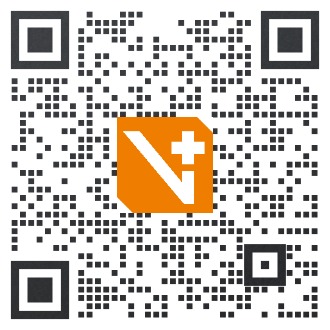
商务合作

动脉网APP

可切换为仅中文
Pictured: Abstract viruses and DNA/Taylor Tieden for BioSpace
图片:抽象病毒和DNA/Taylor Tieden for BioSpace
Adeno-associated viruses, or AAVs, are the workhorse vector of gene therapies. With the American Society of Gene and Cell Therapy’s (ASGCT) Annual Meeting set to kick off this week, scientists and pharmaceutical executives are gearing up to discuss the latest in capsid development to support a new generation of gene therapies..
腺相关病毒(AAV)是基因治疗的主要载体。随着美国基因与细胞治疗学会(ASGCT)年会将于本周开幕,科学家和制药高管正准备讨论衣壳的最新发展,以支持新一代基因疗法。。
Among the goals of the companies in this space is improving precision for safer and more efficacious candidates and developing treatments for diseases that affect bigger patient populations than the rare diseases addressed by currently approved gene therapies.
这些公司在这一领域的目标之一是提高更安全和更有效候选人的精确度,并开发针对比目前批准的基因疗法所解决的罕见疾病影响更大患者群体的疾病的治疗方法。
'The AAV capsid field is making great progress in targeting AAVs to tissues, such as brain and muscle,” said Laura Richman, the chief development officer at Affinia Therapeutics, which will present data on its capsid programs for genetic cardiomyopathies and sporadic ALS. “These advancements have the potential to unlock diseases that are currently not treated.”.
Affinia Therapeutics的首席开发官劳拉·里希曼(LauraRichman)说:“AAV衣壳领域在将AAV靶向大脑和肌肉等组织方面取得了很大进展”,该公司将提供其遗传性心肌病和散发性ALS衣壳项目的数据。“这些进步有可能解开目前尚未治疗的疾病。”。
Kevin Forrest, cofounder, president and CEO of Kate Therapeutics, which is developing gene therapies for muscle and heart diseases, said he is also looking forward to presenting about capsid advances. “We’re excited about discussions on next-generation gene therapies that have more potency and selectivity for tissues of interest,” Forrest told BioSpace.
Kate Therapeutics的联合创始人、总裁兼首席执行官凯文·福雷斯特(KevinForrest)表示,他也期待着介绍衣壳的进展。Kate Therapeutics正在开发肌肉和心脏疾病的基因疗法。Forrest告诉BioSpace:“我们对下一代基因疗法的讨论感到兴奋,这种疗法对感兴趣的组织具有更大的效力和选择性。”。
“This is where the field is going and is really the next ‘big thing.’”.
“这是该领域的发展方向,也是下一个‘大事件’。”。
Targeting Larger Patient Populations
针对较大的患者人群
Many of the currently approved gene therapies target rare diseases that individually affect fewer than 200,000 people in the U.S. Capsida Biotherapeutics, a gene therapy platform company with several presentations at ASGCT, is currently working on creating capsids to support therapies for diseases with larger patient populations..
目前批准的许多基因疗法针对的是罕见疾病,这些疾病单独影响美国不到20万人。Capsida Biotherapeutics是一家基因治疗平台公司,在ASGCT上有多次演讲,目前正在致力于创建衣壳,以支持治疗患者人数较多的疾病。。
“Ultimately, [approved gene therapies have] really only been used in ultra-rare conditions and oftentimes have been administered using quite invasive delivery methods,” Capsida CEO Peter Anastasiou told BioSpace.
Capsida首席执行官彼得·阿纳斯塔西奥(PeterAnastasiou)告诉BioSpace:“最终,[批准的基因疗法]实际上只在极罕见的情况下使用,并且通常使用相当侵入性的递送方法。”。
The team at Capsida is engineering capsids to cross the blood brain barrier and avoid the liver, Anastasiou said. “By doing so, that basically enables a much wider therapeutic window.” From this platform, Capsida has developed two programs that are on the cusp of entering the clinic: one for a genetic form of epilepsy and the other for a genetic form of Parkinson’s. While these genetic subsets affect a smaller population, it’s estimated that more than 4 million people have either Parkinson’s or epilepsy in the U.S..
Anastasiou说,Capsida的团队正在设计衣壳以穿过血脑屏障并避免肝脏。“通过这样做,基本上可以实现更广泛的治疗窗口。”从这个平台上,Capsida开发了两个即将进入临床的程序:一个用于遗传形式的癫痫病,另一个用于遗传形式的帕金森病。虽然这些基因亚群影响的人群较少,但据估计,在美国有400多万人患有帕金森氏症或癫痫病。。
“I’m very excited as gene therapy moves from sort of a rare disease space to a more common disease space,” said Capsida Cofounder and Chief Research and Innovation Officer Nick Flytzanis.
Capsida联合创始人兼首席研究与创新官NickFlytzanis说:“随着基因治疗从一种罕见的疾病空间转移到更常见的疾病空间,我感到非常兴奋。”。
Selectivity for Tissues of Interest
对感兴趣组织的选择性
One of the main struggles with AAV therapies—and many therapies in general—is hitting affected cells without damaging other types of cells.
AAV疗法和许多疗法的主要斗争之一是在不损害其他类型细胞的情况下打击受影响的细胞。
In recent years, companies have mainly focused on improving the ability of AAVs to target and replicate in certain cells—what’s known as delivery and tropism, Flytzanis said. “That’s not a surprise because those were the main areas—not the only, but the main areas—that were necessary to achieve improvements on to broaden the disease space that gene therapy could be applied to.”.
Flytzanis说,近年来,公司主要致力于提高AAV在某些细胞中靶向和复制的能力,即所谓的传递和向性。“这并不奇怪,因为这些不仅是主要领域,而且是实现改进以拓宽基因治疗可应用于疾病空间所必需的主要领域。”。
At Capsida, the team is engineering capsids to improve tropism in the brain while reducing accumulation in the liver. The challenge is that many of the receptors expressed in the blood-brain barrier (BBB) are also expressed in the liver. But if the team can get it right, it will allow for decreasing the “very high doses that wild-type capsids have leveraged historically in the gene therapy field, which are associated with off-target toxicities,” said cofounder and Chief Technology Officer Nick Goeden..
在Capsida,该团队正在设计衣壳,以改善大脑的趋向性,同时减少肝脏中的积累。挑战在于,血脑屏障(BBB)中表达的许多受体也在肝脏中表达。但是,如果团队能够做到正确,它将允许减少“野生型衣壳在基因治疗领域历史上使用的非常高的剂量,这与脱靶毒性有关”,联合创始人兼首席技术官尼克·戈登(NickGoeden)说。。
Capsida cofounder Viviana Gradinaru, whose lab at CalTech spawned the technology that formed the basis of the company, said that a priority now is identifying more blood-brain barrier receptors. Once those receptors are identified, scientists can use AI-enhanced rational engineering to design AAV capsids that can cross the BBB to deliver therapies while steering clear of the liver.
Capsida联合创始人VivianaGradinaru在加州理工学院的实验室产生了这项技术,该技术构成了该公司的基础。她说,现在的首要任务是识别更多的血脑屏障受体。一旦这些受体被鉴定出来,科学家就可以使用人工智能增强的理性工程来设计AAV衣壳,这种衣壳可以穿过血脑屏障来提供治疗,同时远离肝脏。
“If we know the BBB weak point, we can prepare better.”.
“如果我们知道BBB的弱点,我们可以做得更好。”。
Even now, though, Goeden expressed optimism in AAVs becoming more targeted and supporting more efficacious therapies. Talking about Capsida CEO Anastasiou, Goeden said, “Peter’s mantra is that this is the year of execution, and it really is because we have the opportunity to take all these things we’ve innovated and demonstrate in patients that they lead to much better outcomes.”.
尽管如此,戈登仍然对AAV变得更有针对性和支持更有效的疗法表示乐观。谈到Capsida首席执行官阿纳斯塔西奥(Anastasiou),戈登(Goeden)说:“彼得(Peter)的口号是,今年是执行年,这真的是因为我们有机会利用我们创新的所有这些东西,并向患者证明它们会带来更好的结果。”。
Mollie Barnes is a freelance science writer based in Los Angeles. Reach her at mollie@100yearsco.com. Follow her on Threads and Instagram @shejustlikedtogo and see more of her work at molliebarnes.contently.com.
莫莉·巴恩斯是洛杉矶的自由撰稿人。联系她的电话mollie@100yearsco.com.在帖子和Instagram@shejustlikedtogo上关注她,并在molliebarnes.contently.com上查看她的更多作品。
最近内容 查看更多
Marvel Biosciences宣布私募
1 天前
NervGen制药公司将在美国脊髓损伤协会第51届年度科学会议上展示两张海报
1 天前
Biogen在早期读数后放弃Ionis在ALS、Angelman综合征中的合作资产
1 天前
相关公司查看更多

Affinia Therapeutics
驱动型生物技术研发商

Kate Therapeutics
基因疗法开发商
产业链接查看更多
所属赛道